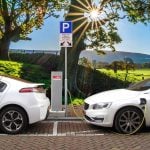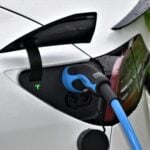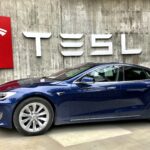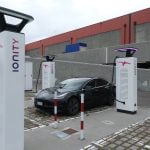Anxiety about the battery range is one of the most common concerns among potential Tesla buyers. However, this is something you don’t really need to worry about the Tesla. On average, you can expect most of the Tesla Battery range to fall around 267 miles on a single charge. The battery itself can last up to 35 years. If you want to find out which Tesla model is perfect by battery range, we have you covered with all the information you need.
Range of Tesla Battery After One Charge
With the latest updates, now setting a baseline Tesla battery range of 267 miles, the average range of the Tesla battery after one charge has increased drastically. Even though the increase in mileage are minimal, even a mere 5 miles improvement can help you drive that little bit more before your next recharge..
On a single charge, you can expect any Tesla car to drive at least 267 miles. However, there are various factors that can determine the range of batteries. Depending on how you drive and the size of the battery, there can be differences. The biggest electric range that Tesla currently offers, comes in at around 375 miles per full charge.
Most Tesla cars also come with advanced dashboards that will show you an average mile range, based on current driving circumstances. This is similar to how it works on a gasoline engine and could show you that you can drive 250 miles on a full charge. However, it could be much less if you constantly stomp on the pedal and drive furiously.
As shown in the figure below, Tesla’s Model 3, Model S, and SUV Model X and Model Y have differing ranges after a single full charge:
| Model | Range |
| Model 3 Standard Range | 267 miles |
| Model 3 Long Range | 334 miles |
| Model 3 Performance | 315 miles |
| Model S | 375 miles |
| Model S Plaid | 348 miles |
| Model X | 332 miles |
| Model X Plaid | 313 miles |
| Model Y Long Range | 318 miles |
| Model Y Performance | 303 miles |
Thanks to the rising popularity and availability of Superchargers, regardless of what Tesla you choose, you will always have enough range for everyday use and lengthy drives.

What Determines the Range for Each Tesla Model?
The range of your Tesla is determined by the car’s model, battery size, and how you drive.
Model of Your Tesla
The size of the battery is one of the most critical factors in determining the cost of an electric car; the bigger the battery, the greater the range (but the higher the price).
The Tesla Model 3 is an excellent alternative if you want to purchase a Tesla for your everyday commute or simply run errands. In terms of practicality and economics, it’s comparable to the Nissan Leaf or Chevy Volt, but the Tesla is sleeker and aesthetically appealing.
The Model S is a long-range beast that provides unrivaled performance by accelerating from 0 to 60 miles per hour in as low as 3.1 seconds. So, if you’re looking for an electric car that outperforms its gasoline-powered equivalents, the Model S is a great option.
The Plaid is comparable to the Model S, but it’s slightly better with additional amenities like improved interior appearance, a carbon fiber spoiler, and better traction control. The performance variant of the trim accelerates even faster, from 0 to 60 mph in just 1.99 seconds.
The Plaid is not your average commute car, but it is the one to choose if you want performance and style.
Size of the Battery
The battery size also influences the car’s mileage range. The Model 3 has the lowest battery and can still go up to 267 miles on a single charge. However, the Model S Long Range has a larger battery and can travel up to 375 miles on a single charge.
Oftentimes, it is the battery capacity that determines the car’s price. The Model 3 Standard Range has the smallest battery, giving it the most affordable pricing at around $40710. The Model S Long Range is expected to cost around $84510.
You can purchase an EV battery with a large battery capacity that can hold a charge for a long time or one that can be charged rapidly with most EV batteries. The good news is that you can have both with a Tesla car!
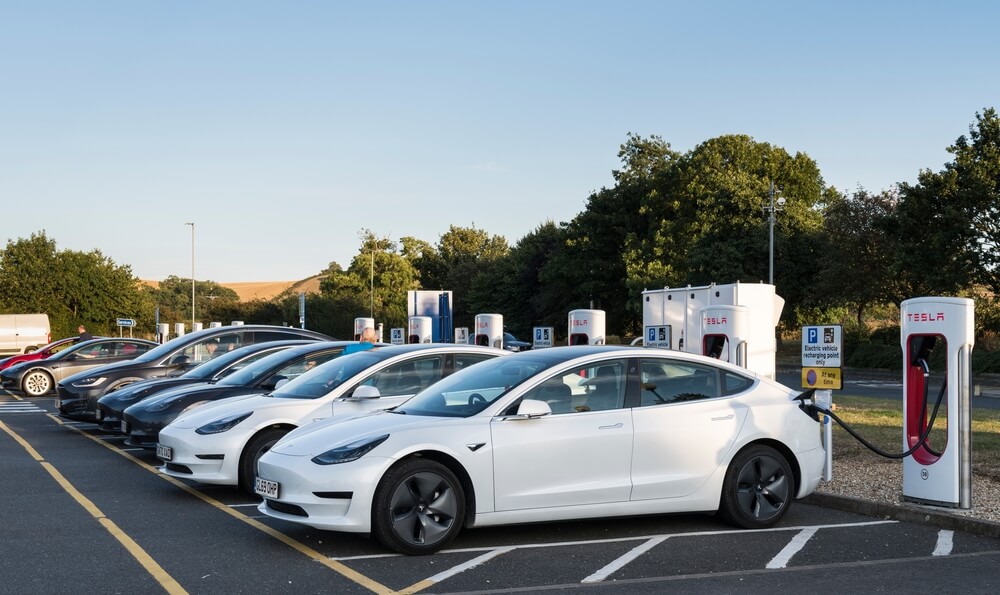
How You Drive Your Tesla
It’s true that cars with classic internal combustion engines (ICE) are different from electric vehicles (EV). However, when it comes to driving, both share a lot of common characteristics. For instance, if you drive an EV fast, it’s battery will also drain more quickly. If you consistently keep driving fast, it won’t last the entire range Tesla claims to achieve.
This happens because your battery expends more power when driving in less than ideal conditions. The same is also applicable to your EV when you drive in snowy conditions or wet weather. Driving into a headwind or in sub-zero temperatures can also further reduce your Tesla battery range.
You can avoid such scenarios if you drive at a reasonable speed and maintain the tires well inflated. It’s also a good idea to brake softly and eliminate all the unnecessary weight from your car. As with any other car, how you maintain and care for your Tesla can help you expand the life of both the car and the battery.
What Is a Standard Tesla Battery Range?
Based on the average number of miles driven by Americans in a year (approximately 143100 miles), Tesla car batteries are known to last between 300,000 and 500,000 miles. This roughly translates to an average battery life expectancy between 21 and 36 years. However, keep in mind that the number can change depending on various factors, including the mileage range.
Tesla is also rumored to be working on a battery that can travel millions of miles. However, the current crop of batteries are not capable of lasting such long distances. Most Tesla cars will also therefore require a battery change at some point during its lifetime.
On average, a replacement battery for Tesla Model 3 can cost anywhere from $5000 to $7000. The cost of replacing batteries are also forecast to reduce as technology improvements reduce the number of times you need to replace the battery. There are still lots of contradictory information about expenses. However, what’s certain is that a Tesla battery may still be able to function after 500,000 miles – albeit with a lower mileage range per charge.
What Reduces the Tesla Battery Range
There are several factors that can reduce the Tesla battery range. However, the most common cause, often comes down to recharging electric car batteries. This can strain the battery life and ability to maintain a charge.
Over time, as the life cycle of the battery decreases, it’s very normal for the battery to lose its range over time. On the plus side, this only affects newer vehicles if you drive 300 miles or more every day. You can also expect consistent performance from your battery over time.
According to research, an average Tesla battery degrades by 10% after 160,000 miles. So, after this distance, the battery’s performance and energy density are 10% lower than when it was at its pinnacle.
Warranty of a Tesla Battery
Fortunately, all Tesla car batteries come with a warranty. So, if they stop working or break down before the warranty expires, you’ll be covered. The model of your vehicle determines the warranty on your battery.
Each warranty lasts for eight years or up to 150,000 miles, whichever comes first. Based on the Model of your car, the chart below breaks down the warranty you’re entitled to:
| Model | Battery warranty |
| Model 3 Standard Range | 8 years or 100k miles |
| Model 3 Long Range/Performance | 8 years or 120k miles |
| Model Y Long Range | 8 years or 120k miles |
| Model Y Performance | 8 years or 120k miles |
| Model S | 8 years or 150k miles |
| Model X | 8 years or 150k miles |
Charging Options for Tesla
Each Tesla is equipped with a particular lithium-ion battery, depending on the car’s desired functionality. This includes energy storage, speed, and charge time. A 100kWh battery pack is available for the Model S and Model X.
The charger you use determines the time it takes to charge your car battery. Tesla, unfortunately, do not come with a wall charger; you must purchase one separately. On the other hand, a mobile charger is included as a backup option.
Tesla Superchargers can be found in high-traffic areas for Tesla owners. So, you can pay a fee when you need a charge when you’re not at home. They are becoming more widely available worldwide and can charge cars for up to 200 kilometers in 15 minutes.
On the other hand, using these charging stations is stressful on your battery. Therefore, it should be used rarely to preserve its life and functionality.
Tesla vs. Gasoline Engine Cars
In terms of mileage range and battery life, cars from Tesla have now become more dependable. However, in terms of pricing, they are still significantly expensive, ranging between $40,000 and $125,000 upfront. This also makes them significantly more expensive than gas-powered vehicles.
On the flipside, it takes less money to recharge a Tesla than what you would spend to buy gas. Even for a battery replacement, you are looking at spending less money than you would for standard ICE cars.
If you are using solar panels to recharge your Tesla, you save more!

Sara Sam may not look like your typical car and finance expert, but don’t let that fool you. With over four years of experience in the industry, she knows all the ins and outs of cars, car insurance, and refinancing. You can trust Sara to help you navigate the often-confusing world of automobiles and financing.




